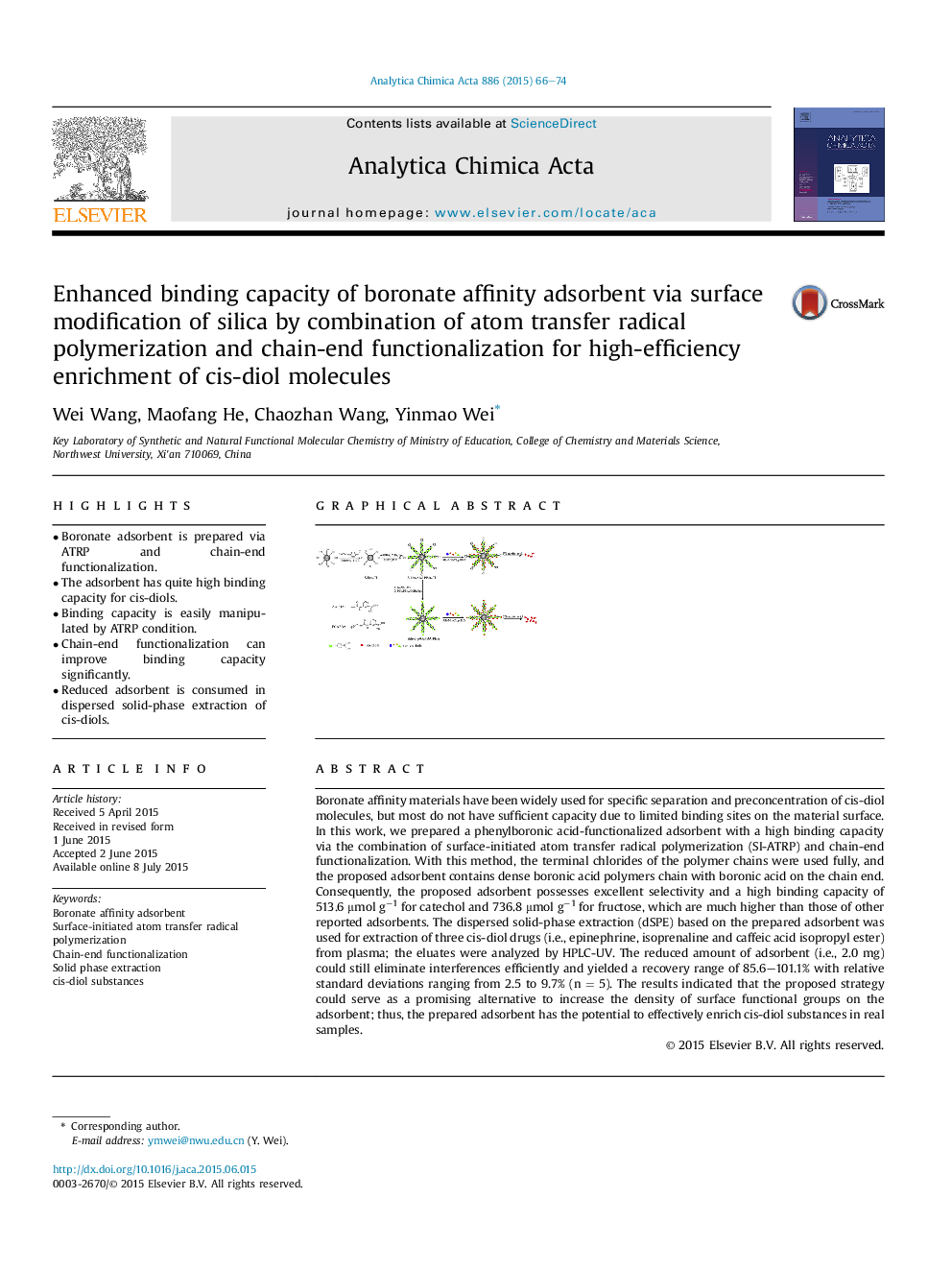| کد مقاله | کد نشریه | سال انتشار | مقاله انگلیسی | نسخه تمام متن |
|---|---|---|---|---|
| 1163727 | 1490946 | 2015 | 9 صفحه PDF | دانلود رایگان |
• Boronate adsorbent is prepared via ATRP and chain-end functionalization.
• The adsorbent has quite high binding capacity for cis-diols.
• Binding capacity is easily manipulated by ATRP condition.
• Chain-end functionalization can improve binding capacity significantly.
• Reduced adsorbent is consumed in dispersed solid-phase extraction of cis-diols.
Boronate affinity materials have been widely used for specific separation and preconcentration of cis-diol molecules, but most do not have sufficient capacity due to limited binding sites on the material surface. In this work, we prepared a phenylboronic acid-functionalized adsorbent with a high binding capacity via the combination of surface-initiated atom transfer radical polymerization (SI-ATRP) and chain-end functionalization. With this method, the terminal chlorides of the polymer chains were used fully, and the proposed adsorbent contains dense boronic acid polymers chain with boronic acid on the chain end. Consequently, the proposed adsorbent possesses excellent selectivity and a high binding capacity of 513.6 μmol g−1 for catechol and 736.8 μmol g−1 for fructose, which are much higher than those of other reported adsorbents. The dispersed solid-phase extraction (dSPE) based on the prepared adsorbent was used for extraction of three cis-diol drugs (i.e., epinephrine, isoprenaline and caffeic acid isopropyl ester) from plasma; the eluates were analyzed by HPLC-UV. The reduced amount of adsorbent (i.e., 2.0 mg) could still eliminate interferences efficiently and yielded a recovery range of 85.6–101.1% with relative standard deviations ranging from 2.5 to 9.7% (n = 5). The results indicated that the proposed strategy could serve as a promising alternative to increase the density of surface functional groups on the adsorbent; thus, the prepared adsorbent has the potential to effectively enrich cis-diol substances in real samples.
Figure optionsDownload as PowerPoint slide
Journal: Analytica Chimica Acta - Volume 886, 30 July 2015, Pages 66–74
